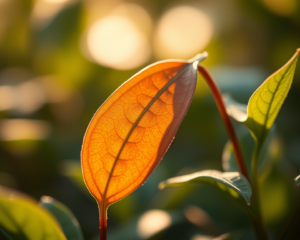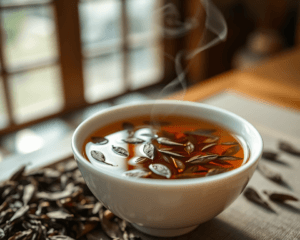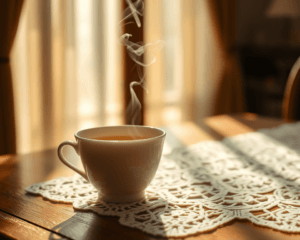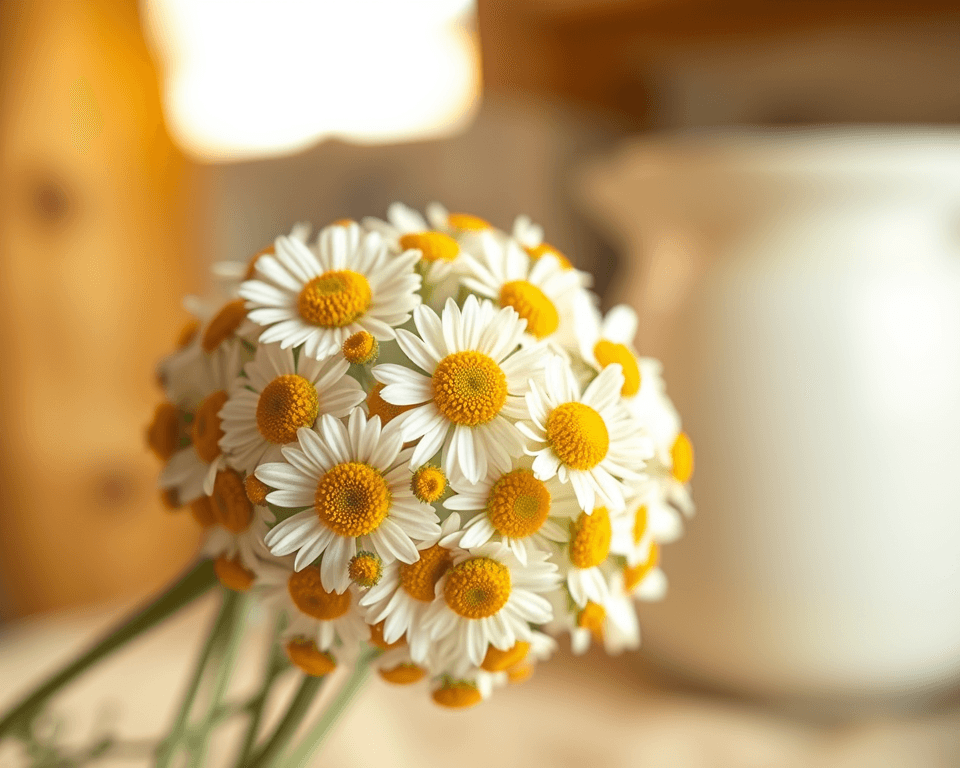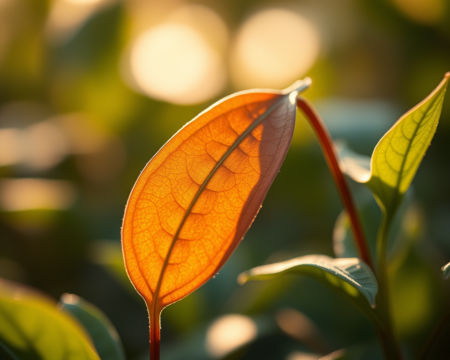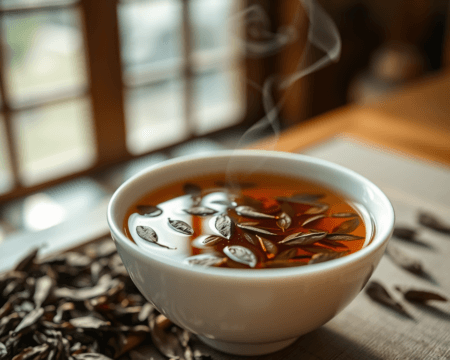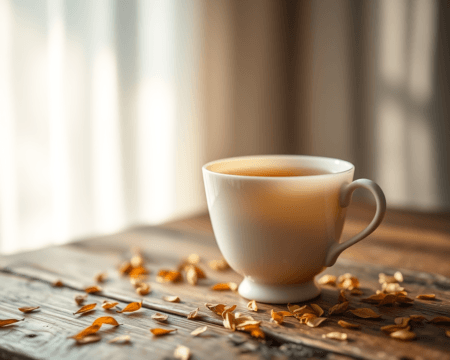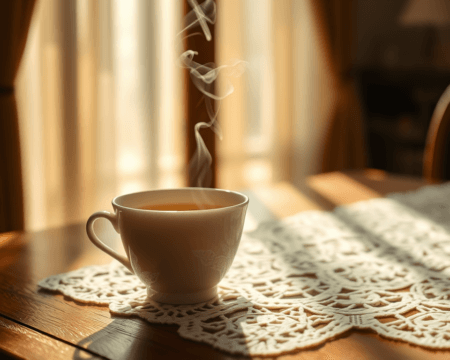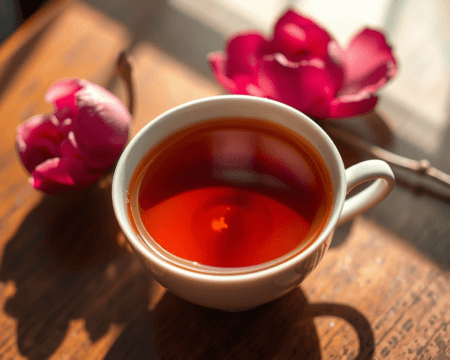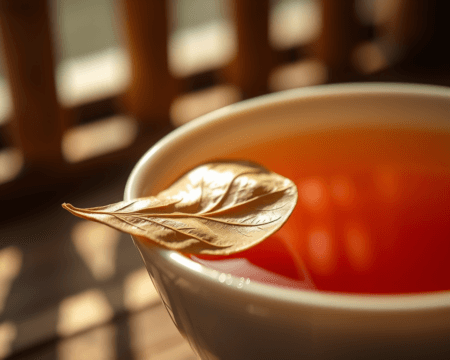Chamomile tea has been a trusty companion in my home, a soothing elixir that melts away stress and helps me catch some quality Z’s. If you’ve ever sipped a cup, you know what I’m talking about! But here’s the kicker: I’ve found that drying my own chamomile flowers not only enhances the flavor but also saves me a chunk of change. I’m all about that DIY life! So, let’s get into the nitty-gritty of how to dry chamomile flowers, ensuring you get the absolute best out of your herbal stash.
Key Takeaways
- Drying chamomile flowers yourself can enhance their flavor and save you money.
- There are several effective methods for drying, including air drying, using a dehydrator, or a microwave.
- Harvesting at the right time and storing properly are critical for maintaining flavor.
- Chamomile has numerous health benefits, including aiding digestion and promoting relaxation.
Understanding Chamomile and Its Health Benefits
Overview of Chamomile as an Herbal Remedy
Chamomile isn’t just a pretty flower; it’s a powerhouse of natural healing properties. This flowering plant boasts soothing qualities that make it perfect for a cup of herbal tea. Historically, traditional herbalism swears by chamomile’s ability to promote relaxation and reduce anxiety. When I brew a fresh cup, I feel like I’m sipping pure calmness. It’s the kind of natural remedy that pairs beautifully with a cozy blanket and a good book.
Health Benefits of Chamomile Tea
Now, let’s talk about the health benefits of chamomile tea. With its anti-inflammatory and antioxidant properties, this herbal infusion can do wonders for your well-being. Whether you’re struggling with digestive issues or just need a good sleep aid, chamomile’s calming effects are well documented. Personally, I’ve found that a cup before bedtime significantly improves my sleep quality. So, if you’re after natural remedies, chamomile tea is a stellar choice.
Effective Methods for Drying Chamomile Flowers
Air Drying Method
Let’s kick things off with the air drying method, the classic approach. This natural drying technique involves hanging your chamomile flowers in a well-ventilated space (preferably away from direct sunlight). Just make sure you give them plenty of room to breathe. Sure, it can be time-consuming, sometimes taking anywhere from 1 to 2 weeks, but the flavor retains its essence so well this way. Just think of it as a waiting game where patience equals a delicious eventual payoff.
Using a Dehydrator
If you’re not about that waiting life, consider an electric dehydrator. This method is a game changer! Quick drying and temperature control are just two of its perks. For optimal settings, I usually stick to around 95°F for efficiency. It typically takes just a few hours to reach that perfect moisture removal balance. Plus, using a dehydrator gives you the assurance that you can preserve these herbs efficiently without worrying they’ll spoil.
Microwave Drying Technique
Now, if you’re really in a crunch, the microwave drying technique is where it’s at. This method provides rapid drying and can be a lifesaver. Just pop your flowers between two paper towels and zap them in short bursts of 30 seconds. Keep an eye on them, though! You don’t want to lose that flavor. I’ve had some great success with this approach, though I’d recommend it more for light use—say you need a quick batch.
Tips for Maximum Flavor Retention
Ideal Harvesting Time
Harvesting your chamomile at the right time plays a crucial role in flavor retention. Ideally, you want to pick those flowers at peak blooming times—early morning is the sweet spot. Think of it as snatching the essence right when the flavor potency is at its highest. The moisture content naturally reduces throughout the day, making those early blooms not only visually arresting but also more flavorful.
Proper Storage Techniques
Let’s not forget about how you store your precious dried flowers. Once you’ve dried them, you’ll want to pop those beauties into airtight containers. Look for dark storage spots to keep your chamomile fresh and potent. I use mason jars—easy, effective, and they keep moisture control in check. This not only extends the shelf life but ensures every brew packs that floral aroma that we all crave from good chamomile.
Creative Uses for Dried Chamomile Flowers
Chamomile Tea Blends
Once you’ve got those lovely dried flowers ready, why not get creative? Blending chamomile with other herbs can elevate your tea game to new heights. Personally, I love mixing chamomile with peppermint or a hint of lemon balm. The flavors mix beautifully and create an infusion that’s refreshing and soothing at the same time. Experimenting in the kitchen with these herbal combinations can lead you to discover your favorite unique recipes.
Other Culinary Uses
Chamomile isn’t limited to just tea! I’ve used it in baking, too—chamomile-infused cookies have become a hit among my friends. You can sprinkle dried flowers into baked goods or even use them to flavor oils for cooking. It’s all about pushing creative boundaries. Who knew that a flower could add so much depth to both savory and sweet dishes?
Common Mistakes to Avoid When Drying Chamomile Flowers
Overdrying and Underdrying
One of the biggest traps I’ve fallen into is the balance between overdrying and underdrying. Finding that sweet spot is essential. You want to aim for light and crispy but not dust. Overly dry chamomile loses its essential oils and flavor, while underdried flowers can invite unwanted mold into the mix. Trust me, it’s not just about getting them dry—recognizing perfect dryness is a skill worth mastering.
Ignoring Storage Conditions
A biggie that sometimes flies under the radar is storage conditions. Environmental factors like temperature fluctuations, light exposure, and humidity can make or break your dried herbs. The wrong conditions can lead to flavor degradation faster than you can say “chamomile tea.” Make sure to keep those jars tightly sealed and away from any moisture. If you can set it up right from the get-go, you’ll reap the rewards later on.
Chamomile isn’t just a flower; it’s a world of flavor waiting to be explored. Start drying chamomile flowers yourself and discover how satisfying it is to brew tea made from your very own harvested herbs. Bonus points for health benefits, money saved, and endless culinary possibilities! Now, go grab those blooms and start your journey into herbal goodness.
Frequently Asked Questions
What is the best time to harvest chamomile flowers?
The best time to harvest chamomile flowers is when they are fully open, typically in late spring to early summer. This ensures the flowers have reached peak flavor and aroma. Early morning, after the dew has dried but before the heat of the day, is ideal for harvesting.
How can I ensure my dried chamomile retains its flavor?
To retain flavor, store dried chamomile in an airtight container away from light, heat, and moisture. Keeping it in a cool, dark place like a pantry or cupboard helps preserve its potent aroma and health benefits for a longer time.
Can I use fresh chamomile flowers instead of dried ones?
Yes, you can use fresh chamomile flowers, but be aware that fresh herbs have a different intensity than dried ones. You may need to adjust quantities in recipes or teas, using more fresh flowers to achieve a similar flavor profile.
What are the health benefits of chamomile?
Chamomile is known for its calming properties, aiding digestion, reducing stress, and promoting better sleep. It also has anti-inflammatory and antioxidant effects, making it beneficial for overall health.
Is it safe to dry chamomile in a microwave?
Yes, drying chamomile in a microwave is safe and quick. Use low heat in short intervals to avoid burning. Once the flowers are brittle to the touch, they are ready. Be cautious to spread them out evenly for consistent drying.
How long can I store dried chamomile?
Dried chamomile can be stored for up to a year if kept in the right conditions. After that, it may lose flavor and potency. Regularly check for any signs of moisture or spoilage to ensure it remains fresh.
Can I combine chamomile with other herbs while drying?
Yes, you can combine chamomile with other herbs such as mint or lavender when drying. This can create unique flavor profiles. Ensure that all herbs are dried at the same rate to prevent any from becoming over or under-dried.
What is the air-drying process for chamomile?
To air dry chamomile, gather the flowers in small bunches and hang them upside down in a dry, dark, and well-ventilated area. This method usually takes one to two weeks, depending on humidity and conditions, resulting in fragrant dried flowers.
Are there any precautions to take when using chamomile?
Chamomile is generally safe, but it may cause allergic reactions in individuals sensitive to plants in the Asteraceae family. Pregnant or nursing women, as well as those on blood-thinning medications, should consult with a healthcare provider before use.
